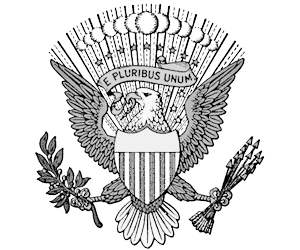|
The
success of the
Underground Railroad
was dependent on complete secrecy.
Underground Railroad Symbols for kids: The Underground Railway
History
There were harsh penalties for runaway slaves and their helpers -
refer to the Fugitive
Slave Act.
Although slaves had been trying to escape from slavery for many
years the name "Underground Railroad" only started to be used in
1831 following
the religious revival of the
Second Great Awakening
which resulted in the 1830
Abolitionist Movement which became active following
Nat Turner's Rebellion
leading to the establishment of the
Underground Railroad.
Underground Railroad Symbols for kids: The Name "Underground
Railway"
The term "Underground Railroad" was chosen in 1831 as a secret code
name for the escape routes used by fugitive slaves. The reason the
name was chosen was this date coincided with
the time the first railroads began to run in America - refer to
American Railroads.
The word "underground" was added meaning a covert group organized to
hide a secret operation.
Underground Railroad Symbols for kids: Symbols and Signs
The
"Underground Railroad", operating under essential secrecy, adopted
many symbols and signs that were made known to the fugitive slaves:
-
Passwords
were used to ensure the fugitives were genuine
-
Messages
were sent by drumming stones together
-
The hoot
of an owl was used to convey messages
-
Certain
Songs were sung as symbols of Underground Railway members
-
"All
Clear" was conveyed in safe houses using a lighted lantern in a
certain place as this symbol
-
Knocks on
doors used a coded series of taps as symbols of identity
-
Certain
items, such as a quilt, were hung on a clothesline
Underground Railroad Symbols for kids: Quilt Codes
Unsubstantiated theories
has been offered that quilts were made containing Underground
Railway symbols. The use of symbols on quilts were said to be an
effective way for slaves to communicate nonverbally with each other
and help each other to escape. This does make some sense in
relation to quilts being hung on clotheslines. Symbols used to
indicate routes:
-
Geese symbols
flying North
-
Crossroads
symbols that indicated Cleveland, Ohio
-
Bears Paw
symbols conveying a message to take a mountain route
-
Bow tie
symbols meaning it would be necessary to change from slave
clothing
-
Broken dish
symbols which would be used as directional symbols along the
escape route
-
Symbols
of log cabins told slaves to look for this symbol on their
journey to freedom
-
Box symbols
that indicated it was time to pack (box-up) ready to escape
-
Patterns
called a monkey wrench were were symbols reminding slaves to
prepare for the journey taking weapons or tools that would help
on their journey
-
North Star
symbols indicating the way to freedom
Underground Railroad Symbols for kids: The Secret Code Names
Once the name
"Underground Railroad"
had been established, it was logical to use other secret words,
phrases, codes, signs and symbols that referred to the operation of
a real railroad. At this time everyone was talking about the new
American railroad. It was essential to keep escape plans completely
secret and by using these secret codes anyone who overheard such
conversations would think they were talking about the railroad, not
runaway slaves.
Underground Railroad Symbols: The Secret Language of the
"Underground Railway"
The meaning of words and symbols used in the
"Underground Railroad" relating to railways were as follows:
Underground
Railroad: The name for the
secret network of organizations and operations who
helped slaves to escape slavery
Railroad Line: Line referred to the
route from one safe house to another
Conductor: Conductors were those
who guided fugitive slaves between safe houses
Station master: The station master
was the owner of a safe house
Station / Depot: Station and Depot
were the secret names given
to hiding places or safe houses used during escapes
Cargo / Freight: Cargo or Freight was the name
given to fugitive slaves who received assistance from
conductors on the Underground Railroad
Passengers: Passengers was
another name give to slaves traveling the escape routes
Baggage: Baggage was another
secret name for a fugitive slave
Parcels: Term to indicate that
fugitive slaves were on their way to a safe house
Stockholders: The name given to
abolitionists who donated money, food, shelter and
clothing to the Underground Railway
Ticket Agents: Agents was the name
given to those who coordinated and planned escape routes.
Slaves were given a 'ticket'
Operator or
Engineer: Other names for a
conductor (the guides)
Jumping off place: Place of safe shelter
for fugitive slaves
Patty Rollers or
Paddy Rollers: Patty Rollers,
Pattyrollers or Paddy Rollers were slave catchers.
Probably a derivation of patrollers but 'Roller rigs'
was used for the investigation of steam locomotives |

